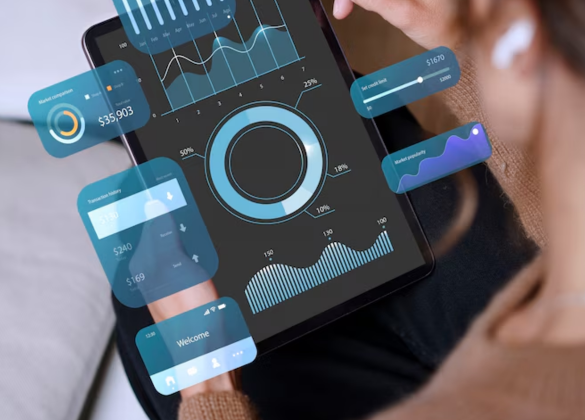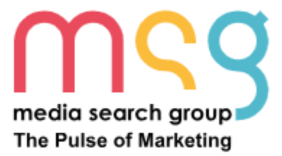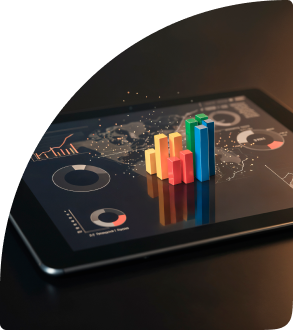Smarter Conversions Start Here: Unlock the Power of Predictive Analytics
Are you aware of user behavior on your website? Probably not. Today, user behavior has become more unpredictable than ever. If you notice the user behavior and observe it, you will realize that visitors don't follow a straight path to purchase anymore. They bounce between devices, compare brands, and delay decisions.
So, how do you predict user behavior? Well, traditional Conversion Rate Optimization (CRO) methods try to patch up the funnel with A/B testing and analytics reviews, but they often fall short. Why? Because they are reactive, not proactive.
Today, predictive analytics for conversion optimization has become a game-changing approach for businesses. Now, it is no longer about what users did but about what they are likely to do next.
Predictive analytics lets you engage high-intent users at just the right moment, fix funnel leaks before they hurt your sales, and personalize user journeys like never before by using machine learning and real-time data analysis.
If you are unsure how to leverage the power of predictive analytics for conversion optimization, partner with Media Search Group and start predicting user behavior smartly to increase conversions.
Revolutionize Your Conversions with Predictive Analytics That Think Ahead.
What Is Predictive Analytics in Conversion Optimization?
Predictive analytics is a technique to study and predict future trends or visitor behavior through historical data such as purchasing history, social media activity, customer interactions, etc., and machine learning, and to predict future actions.
- AI-powered behavior analysis: Algorithms can detect subtle patterns like hesitation over a call-to-action or repeated clicks on certain elements.
- Proactive strategy: Instead of reacting to drops in conversions after the fact, you can act in the moment.
- Data-rich decision-making: Predictive models digest huge volumes of data, from scroll depth and form abandonment to heatmaps and clickstream paths to produce actionable insights.
In the context of CRO, that means predicting whether a user will complete a purchase, abandon their cart, or bounce off a landing page before it happens.
Here's what sets predictive CRO apart:
Unlike reactive CRO, where changes are based on past trends or A/B test results, predictive CRO adapts in real-time based on what the data is telling you about a specific user's journey.

The Core Benefits of Predictive Analytics for CRO
Through predictive analytics, businesses get the right direction. Some of the core benefits of predictive analytics for conversion rate optimization include:
- Spot high-intent users instantly: AI can flag visitors who are likely to convert so you can serve them the right message or offer at the right time.
- Detect drop-off points early: Predictive tools identify where users typically leave your funnel, giving you the chance to fix problems before they impact revenue.
- Anticipate purchase patterns: Want to know which blog posts or product pages are more likely to lead to sales? Predictive modeling shows how content contributes to conversions.
- Create real-time personalization: Segment users based on intent, behavior, and demographics to deliver personalized experiences at scale.
- Reduce waste, boost ROI: Brands using predictive CRO have seen a 20-30% increase in conversions while cutting ad spend and manual analysis costs (Source: McKinsey and Company).
How Predictive Analytics Works in CRO (Step-by-Step)
Here's how businesses are using predictive analytics to overhaul their conversion strategy:
Data Collection
Tools track user activity across devices, including mouse movements, dwell time, session length, device type, and entry points. Heatmaps, for example, can show the hesitation or drop-off location of the user.
Data Analysis
Machine learning models analyze this behavior to find patterns, such as which paths lead to checkout versus bounce. These models improve over time, becoming more accurate with every interaction.
Prediction
Based on those patterns, the system can forecast what a user is most likely to do next, like abandoning a cart or needing assistance with a form.
Optimization Recommendations
The AI then recommends or automatically applies changes, such as:
- Rewriting CTAs for hesitant users
- Streamlining checkout for mobile visitors
- Offering exit-intent popups or live chat prompts
Integration with Tech Stack
These insights don't live in a silo. Predictive analytics tools integrate with CRMs, CMS platforms, and CDPs to ensure every part of your marketing funnel is aligned and responsive.
Identifying Drop-Off Points with Predictive Insights
Drop-off points are moments in the user journey where potential customers leave without converting. They can happen during product comparisons, during checkout, or even on your homepage. And every drop-off represents lost revenue.
Here's how predictive analytics tackles this challenge:
- AI Pinpoints Friction: Algorithms observe signals when someone is unsure, has changed their mind, or has stopped interacting. For example, a user who keeps switching between sizes might be confused by your sizing chart.
- Heatmaps and Session Replays: While heatmaps reveal where users focus their attention, AI-enhanced analysis interprets this data to predict which areas, if optimized, will yield the greatest impact on conversions.
- Smart Segmentation: Not all users drop off for the same reason. Predictive analytics lets you analyze by:
- Traffic source (organic vs. paid)
- Device (desktop vs. mobile)
- Intent (new visitor vs. returning customer)

Predictive Lead Scoring: Focus on the Right Customers
When every lead matters, knowing where to focus your energy is key. Predictive analytics helps you qualify leads with far greater accuracy by assigning scores based on their behavior, engagement level, and demographics.
For example, if a visitor views a pricing page multiple times, downloads a whitepaper, and returns via email, predictive models will flag them as high-intent. You can then prioritize them with personalized emails or timely calls, improving close rates significantly.
This kind of AI-powered lead targeting isn't just smart, but it's scalable. Whether you handle 10 leads a week or 1,000, predictive CRO makes it easier to focus your sales efforts where they count most.
Predictive Product Recommendations That Actually Convert
Ecommerce platforms thrive on relevance. When customers see the right product at the right time, they're more likely to buy.
Predictive analytics tools analyze browsing patterns, cart activity, and even location data to recommend products that match a customer's current intent. For instance:
- A visitor who just viewed workout gear might see protein supplements or fitness trackers.
- Someone lingering on luxury handbags might get a pop-up with high-end matching accessories.
Unlike generic "Customers also bought..." lists, AI-powered personalization builds a dynamic recommendation engine that adapts in real time.
According to Salesforce, personalized product recommendations can drive up to 26% of total ecommerce revenue. And the best part? Once your predictive system is set up, it keeps learning and improving automatically.
Don't Just Fix the Funnel, Predict the Leaks
You might already have a conversion funnel in place. But is it reactive or predictive?
Traditional analytics only show you what went wrong after it happened. Predictive funnel optimization, however, gives you early warning signals. It detects patterns that hint at upcoming drop-offs, like slow loading time on mobile, long form fields, or confusing checkout steps.
Let's say your cart abandonment rate is rising. Predictive analytics for conversion optimization might uncover that mobile users are struggling with your coupon code section. You can then A/B test a simplified version and fix the issue before it costs you more sales.
The result? A smoother funnel, higher retention, and a better customer experience.
Where Predictive CRO Fails: Common Mistakes to Avoid
While predictive analytics is a powerful tool, it needs the right strategy to work. Here are a few common mistakes you can avoid:
- Relying on Poor Data
If your data is incomplete, outdated, or inconsistent, your predictions will be off. Always start with clean, well-organized data from reliable sources like your CRM, analytics tools, and customer feedback. - Expecting Instant Results
Predictive CRO works best over time. It needs enough behavioral data to train your models. Don't expect miracles in the first week. Give it time to learn and evolve. - Ignoring Human Insight
AI can detect patterns, but it doesn't understand your brand voice or emotional messaging. The best strategy combines machine intelligence with creative human input.
Predictive Analytics Tools That Can Help
You don't need to build your own system from scratch. Several predictive analytics tools are already making it easy for businesses to start fast:
- Google Analytics 4: Now comes with predictive metrics like purchase probability and churn likelihood.
- HubSpot: Offers predictive lead scoring and smart content personalization.
- Hotjar with AI-enabled integrations: Heatmaps plus behavioral predictions.
- Optimizely: Combines A/B testing with AI-based personalization.
- Piwik PRO: Great for privacy-compliant predictive modeling in the EU.
Whether you're a growing brand or an enterprise-level company, there's a solution out there that fits your scale and budget.
Use Predictive Analytics for Conversion Optimization the Right Way
Media Search Group helps you unlock the real power of predictive analytics without the complexity. From setting up AI-driven tools to identifying your biggest conversion leaks, we simplify the process and give you results that scale. Let's turn your user data into smarter and faster conversions today.
Supercharge Your Conversions with Predictive AI Insights
Unlock Real-Time Personalization & Higher ROI with Predictive Analytics for CRO








